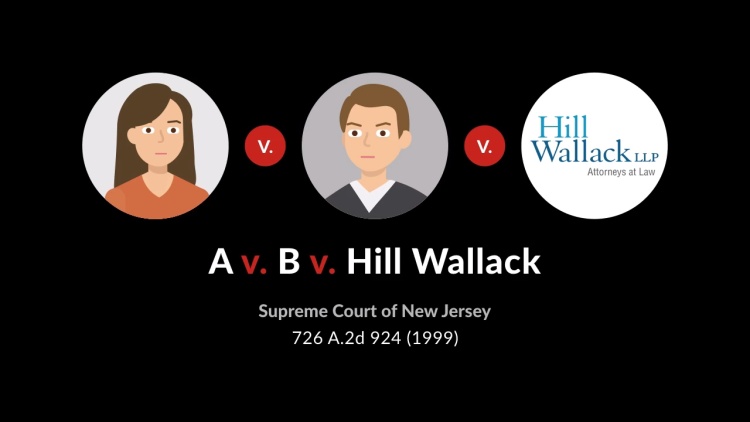A. v. B.
New Jersey Supreme Court
726 A.2d 924 (1999)

- Written by Christine Raino, JD
Facts
A husband (defendant) and wife hired law firm Hill Wallack (HW) for estate planning. They waived any conflict of interest arising from the joint representation, and the waiver stated that information provided by either spouse might become accessible to the other. HW drafted wills devising each spouse’s estate to the surviving spouse or, if the other spouse died, then to contingent beneficiaries, including descendants. Unbeknownst to the wife or HW, the husband had recently fathered a child with another woman (plaintiff). The woman coincidentally hired HW to pursue a paternity action against the husband. Because of a clerical error, HW was not initially aware of the conflict of interest. When the husband learned of HW’s representation of the woman, he hired another firm to represent him in the paternity action. After that firm alerted HW to HW’s conflict, HW withdrew from representing the woman. HW believed it was also ethically obligated to inform the wife of the existence of the husband’s child, as the planned wills created a possibility of her assets passing to the child. In the paternity action, the husband sought an order preventing HW from informing his wife about the child. The family court denied the request, but the appellate division reversed, imposing restraints on HW. HW appealed.
Rule of Law
Issue
Holding and Reasoning (Pollock, J.)
What to do next…
Here's why 899,000 law students have relied on our case briefs:
- Written by law professors and practitioners, not other law students. 47,000 briefs, keyed to 994 casebooks. Top-notch customer support.
- The right amount of information, includes the facts, issues, rule of law, holding and reasoning, and any concurrences and dissents.
- Access in your classes, works on your mobile and tablet. Massive library of related video lessons and high quality multiple-choice questions.
- Easy to use, uniform format for every case brief. Written in plain English, not in legalese. Our briefs summarize and simplify; they don’t just repeat the court’s language.





